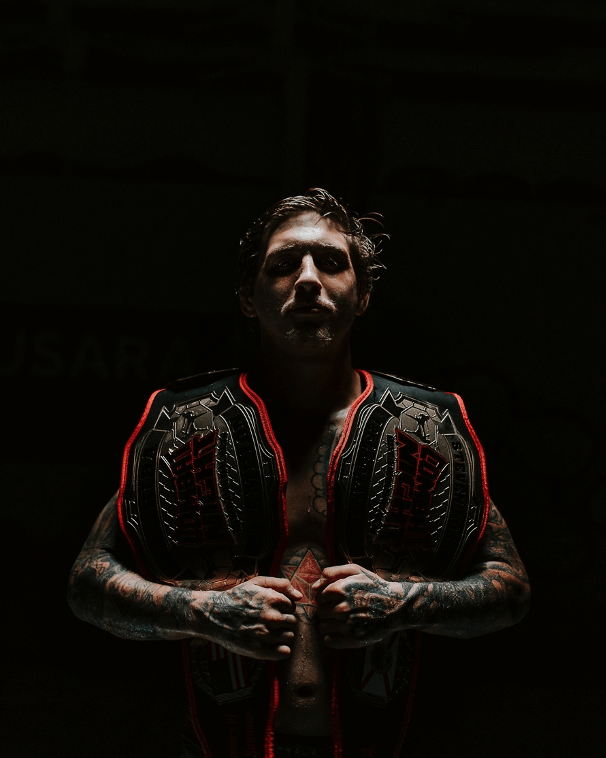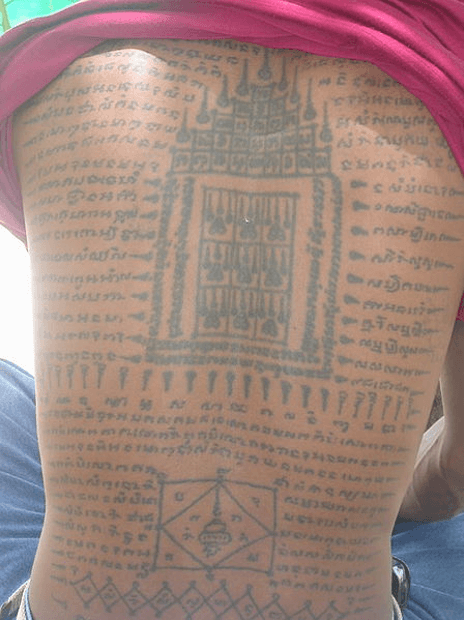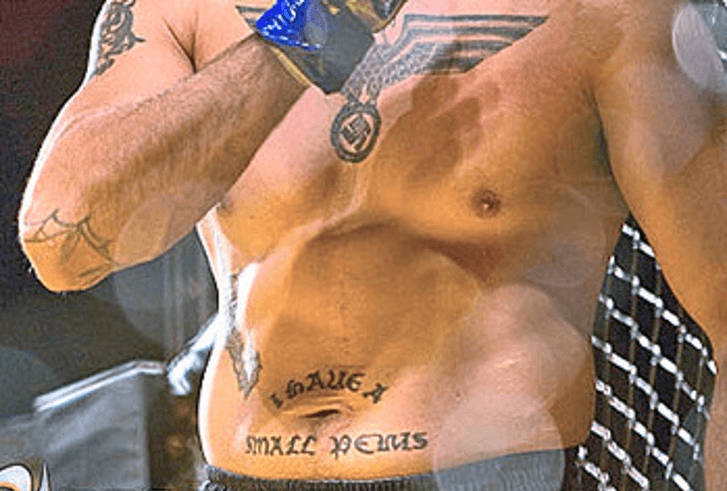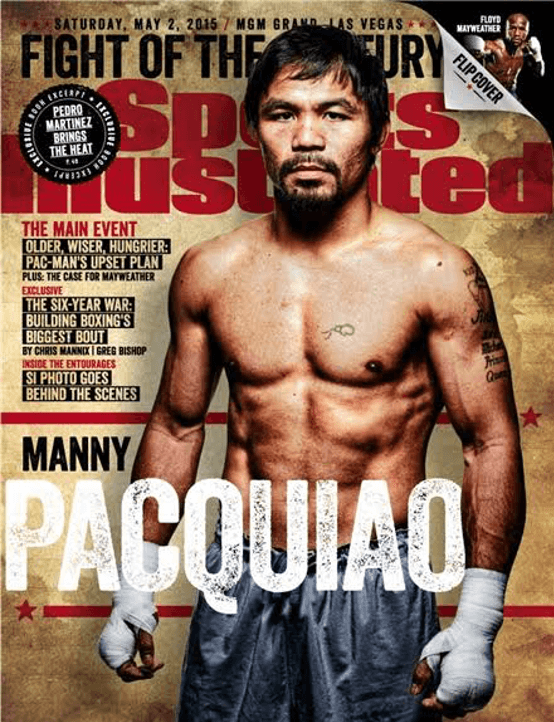It’s not uncommon to see athletes covered in tattoos. Turn on your TV and tune in to any sports channel. You’ll see what I’m talking about. From football, cricket, rugby and basketball, all the way to mixed martial arts, boxing, judo, wrestling, and karate – you’ll see many athletes proudly displaying their ink to the whole world. So, the question now is, why are tattoos so popular in the martial arts world? Read on to find out!
Page Contents
Why do martial arts fighters get tattoos?

Photo by Wade Austin Ellis
Tattoos are as individual as the person it’s tattooed on. And behind each tattoo is a story of why it was chosen and how it got memorialised on the athlete’s skin. Just like most regular people, athletes get tattoos for a variety of reasons, such as:
- Appear more intimidating to opponents
Athletes are fierce competitors. Before going into a fight, it’s important for them to know they’ve got an edge over their opponent. Tattoos may look harmless enough (it’s just ink on skin). But if you’re facing someone with a full body tattoo and he’s looking at you like he’s about to have you for lunch, well, that’s pretty menacing, I think.
Which would intimidate you more? A clean-cut opponent or a tattooed one? Personally, I’d say it’s the latter. While tattoos are becoming more mainstream than ever, there’s still that old stereotype which says tattooed folks are scary, aggressive and just overall bad people.
- Draw more attention
Tattoos get people talking, it’s a great conversation starter! And a lot of athletes like being talked about – it helps boost their popularity which in turn creates more opportunities for them. They get more fans and followers on social media. Best of all, they get sponsorships and lucrative deals with various brands.
- Commemorate special events and people
Both athletes and non-athletes alike get tattooed for this very reason. In fact, many pro athletes get their first tattoo well before they enter competitive sports – they just add more as they go along.
Some, like MMA fighter Quinten Wyland, got his grandmother’s name tattooed on his forearm as a tribute for loving and supporting him. On the other hand, Joe Riggs got the word ‘DIESEL’ tattooed on his stomach because he bought a Diesel VW Bug (not so sure it was a good idea, but to each his own!).
- It’s the ultimate form of self-expression
People like being unique, athletes and fighters probably even more so. And what better way to stand out from the crowd than to get inked with something totally unique to you?!
Our bodies are our very own canvas. We can use it to tell our stories to the world. We get tattooed because we want to remember someone or something by, and we want to let everyone know about it.
- Share an important message
Athletes inspire a lot of people. Many of them have their own advocacies in life and they use their platform, i.e. their popularity, to get their message across. For instance, Jon Jones has the Bible verse Philippians 4:13 tattooed on the right side of his chest:
- It’s a cultural thing

Image source: https://commons.wikimedia.org/wiki/File:Thai_tattoos_2.jpg
If you follow Muay Thai, you’ll notice many fighters sporting tattoos of geometric patterns, animal and deity symbols. This is because once upon a time in ancient Thailand, people believed these tattoos (known as Sak Yant) made them invincible to enemy attacks. It supposedly provided spiritual protection as well.
If you want to know more about the history of tattoos around the world, check this article: A History Of Tattoos: Skin Art Through The Ages.
- Just because
Martial arts fighters and athletes alike don’t need any reason to get a tattoo – just like you and me. They don’t owe anybody an explanation, and they’re free to get a tattoo any time they feel like it!
Thinking of getting your own tattoo while training in martial arts?
Why not? Whether you’re seriously training or just playfully dabbling in martial arts, you’re welcome to get a tattoo anytime you like. If it’s your first time, you need to be aware that the healing period is going to be far longer than your tattoo session.
You are technically undergoing a minor surgical procedure at the hands of your tattooist. So, take note of these do’s and don’ts of tattooing that are relevant for aspiring fighters like you!
- Do think and rethink your decision
Think before you ink! Please don’t get a tattoo as a spur of the moment thing. Getting a tattoo whilst you’re drunk is never a good idea, and regret will come hard and fast when morning comes.
When you get to the big stage and fight in front of a huge crowd, your tattoo’s going to get noticed. Unless, of course, you choose to engage in a sport that requires a uniform like karate and judo.
Here’s a case in point: Melvin Costa’s tattoo. Go zoom in on the photo and read what his belly button tattoo says. Cringey, but he appears to be rather proud of having a small p****.

That said, stick and poke tattoos are getting mighty popular, especially among the youth. People are tattooing each other for fun – and to save money. And it’s all fine and dandy, even Manny Pacquaio did his own poke tattoo when he was 13! (Check out the tiny boxing glove tatt on the left side of his chest – yep, he did that).

Image source: https://www.sicovers.com/manny-pacquiao-fight-of-the-century-2015-may-04
But before you go under the needle – whether at your friend’s house or at a professional tattoo parlour – make sure it is absolutely what you want!
- Follow tattoo aftercare instructions to the dot
Tattoos may be permanent, but if you don’t take care of it, then it’s going to look patchy, old, and faded before too long. Tattoo aftercare is essential to making sure your skin art lasts forever!
Now, there are a lot of do’s and don’ts in tattoo aftercare. First and foremost, the most crucial stage of the healing process is the first couple of days. Your skin will be at its most tender at this point. It will be swollen, painful and extra sensitive. But you need to power on and wash it carefully a few times a day to clean up the goo that’s accumulated on the surface.
Apply healing ointment like Aquaphor or A+D (but never Vaseline!) to protect your skin. Then once it stops ‘weeping’, it’s time to hydrate and moisturise your skin so it can heal underneath.
- Avoid training for at least 1-2 weeks after getting tattoo
Even if your tattoo looks healed on the surface, it’s still repairing itself underneath. When training, especially grappling, it will be easy enough to cause trauma to the tattooed area. You can cover it up, sure, but if you’re not careful you can easily get a tattoo infection. I mean, gyms, dojos, cages, and rings aren’t exactly germ-free places.
So, get some rest please. If your body can’t handle going without exercise for a couple of weeks, then go lift some weights at the gym or go running. Just make sure your tattoo is well-protected, and won’t get irritated and chafed by strenuous physical activities.
- Don’t train out in the sun
The sun is great and all, but once you get a tattoo, every time you face the sun you will need to be prepared. Why? Because the sun’s UV rays will break down the ink pigment in your skin; this can cause some loss in colouring. Once your tattoo’s fully healed, you can wear UV-protective clothing like this tattoo sleeve cover or just get yourself some sunscreen lotion with high SPF.
- Do talk to your tattooist
They’ve been around and they know what’s best for you. If you have any allergies or skin conditions, let them or your GP know. You don’t want your body to end up rejecting the tattoo because you’re allergic to tattoo ink.
Conclusion
There’s no denying it – tattoos in martial arts are prevalent nowadays. And it shows no signs of slowing down. As time goes by, we’ll see even more fighters and athletes showcasing their inked skin to the world.
